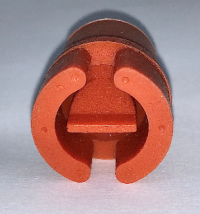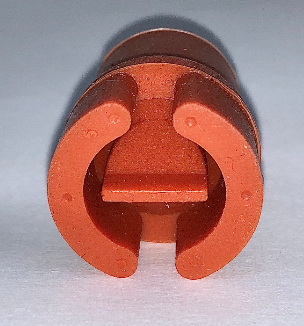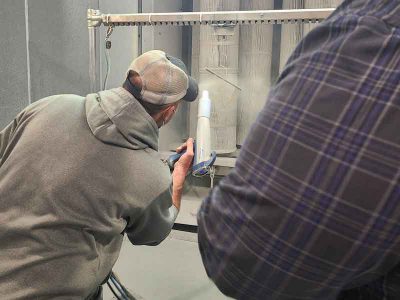Masking vents are very important. Trapped air under masks can ruin your surface finishing. Vents can be incorporated into masks to release any trapped air and maintain consistent surface finishing.
 Releasing trapped air from under masks can be difficult. Masking needs to be tight and form a seal, which by definition means nothing should get passed the mask.
Releasing trapped air from under masks can be difficult. Masking needs to be tight and form a seal, which by definition means nothing should get passed the mask.
The problem is that as parts go through the heating and cooling cycle of a surface finishing process, any air that is trapped behind the mask can expand and contract. In some circumstances that expanding and contacting air can cause a mask to move or in extreme circumstances, blow off completely.
There are options, though, and adding vents to molded masks is one of them. Vents can come in a number of styles. There are vents that are simply holes in the masking to release the air; masks that channel air to a particular area of the seal; as well as vents that open and close to release air and reseal the mask during the surface finishing process.
 The most basic type of vent is a hole in the mask. Holes can be punched into masking caps or plugs in order to release pressure, but they will not work in a liquid application. A number of standard masking caps are available that have a raised pip that can be pulled off. When that pip is pulled off it exposes a small hole in the cap which allows the cap to vent.
The most basic type of vent is a hole in the mask. Holes can be punched into masking caps or plugs in order to release pressure, but they will not work in a liquid application. A number of standard masking caps are available that have a raised pip that can be pulled off. When that pip is pulled off it exposes a small hole in the cap which allows the cap to vent.
Duckbill vents are vents which can open and close during the process. These duckbill shaped vents have a slit in them that opens when the pressure behind them builds up. Once the pressure equalizes, the vent closes to ensure the mask remains operational. A duckbill vent can be incorporated as a permanent feature of a mask or it can be a removable piece that can be changed over time. Duckbill vents are ideal for liquid applications
Another option for liquid applications is dome vents. Dome vents are similar to duckbill vents in that they can open and close during the process. A dome vent is a plug style vent that passes through a hole in the mask and seals the hole. Channels in the dome vent direct the air through the plug up towards the dome of the plug. The dome of the plug is flexible, so as pressure builds up under the dome, it can lift to release the pressure and then snap back down once pressure equalizes.
These vents can all be manufactured in a range of rubber materials to suit your surface finishing process.

If you need more information on using vents in masking, a good masking supplier such as Caplugs or any of their distribution partners can provide help.
Source: John D. Gill
John D. Gill is an Engineer with experience in masking and product protection throughout the UK, Europe and USA. He can be reached at www.johndgill.com and via Twitter @masking101










